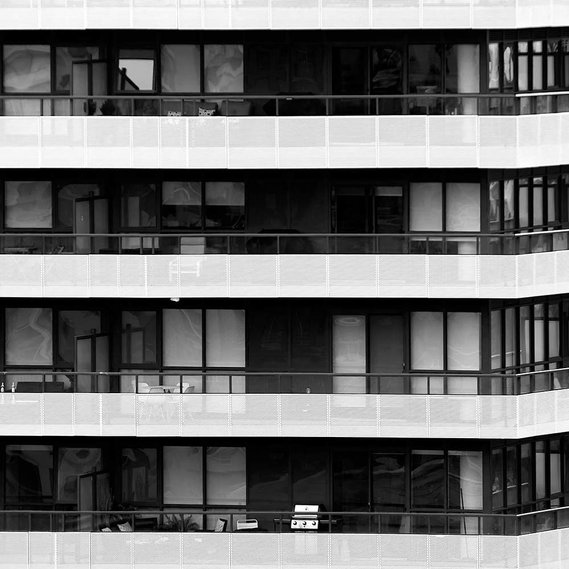Vertical Futures is a three-phase photographic exploration of the urban environment. It examines the connection between the urban landscape and the natural environment and more specifically, how we live in tandem between both. With roots in New Urbanism, Vertical Futures aims to spark thought and conversation about how we live within our city. The purpose of these phases is to emphasize the process of development, not only referring to land use but also the development of ideas, processes and frameworks
Phase One is a typological series of photographs looking at the repetitive, monotonous nature of recent condominium developments. This series alludes to the archaic zoning laws in the city of Toronto that have prevented the generation of alternative housing types outside of high rise condos and single-family houses. Overall, Phase One encourages viewers to think critically about the types of housing we have in Toronto and how these laws and regulations have prevented such sustainable and affordable housing options.
Phase Two consists of six transparent inkjet prints of architectural plans. These plans were originally created by architects including Jean Nouvel and Precht Architects. These plans were manipulated to represent the historical process of creating blueprints in an architectural setting. By creating digital negatives from these computer-aided designs, the connection between original processes and contemporary ones are created. From here the viewer is led to consider historical urban living and neighbourhood structures, something that New Urbanism values very highly. The question posed for this phase is: what are the possibilities in fulfilling, sustainable and connected urban life?
Phase Three of Vertical Futures is a large format collage that adopts an idealist and surrealist view of what Toronto could look like. Based on the principles of New Urbanism which include walkability, connectivity, mixed-use and diversity, mixed housing, quality architecture and urban design, traditional neighbourhood structure, increased density, green transportation and sustainability one can start to conceptualize a city that works not just for them on an individual basis but also for the population and environment as a whole













